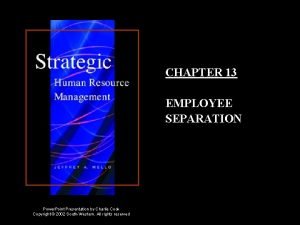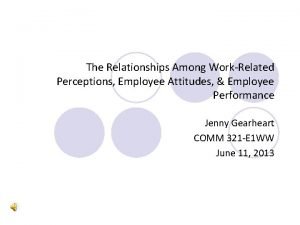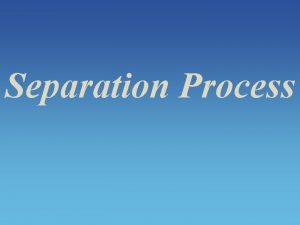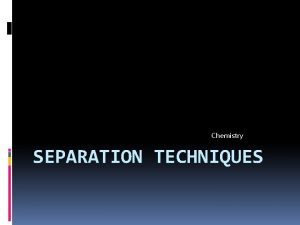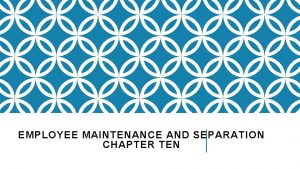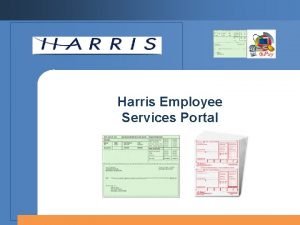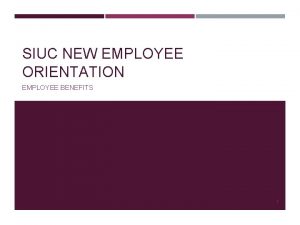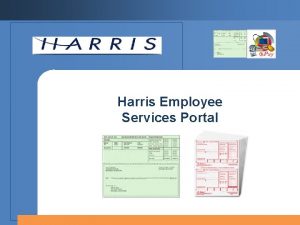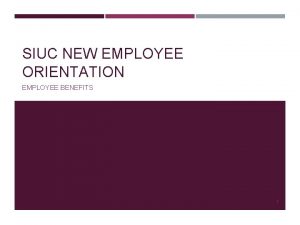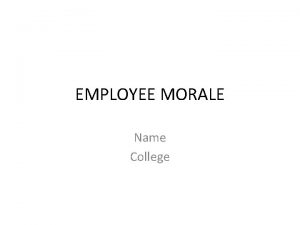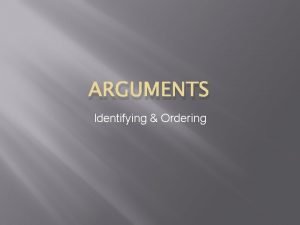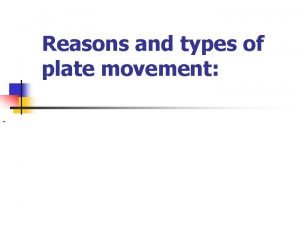CHAPTER 13 EMPLOYEE SEPARATION Employee Separation Reasons for


























- Slides: 26

CHAPTER 13: EMPLOYEE SEPARATION

Employee Separation • Reasons for employee separations – Pressures on firms to remain competitive & efficient – Decline in employee commitment to employers • Importance of managing separations – – – Transitions of employees out of firm go smoothly Continuing operations of firm not disrupted Important professional relationships not damaged • Types of separations – Reductions-in-force, turnover, & retirements Copyright © 2005 South-Western. All rights reserved.

Reductions-in-Force (RIFs) • Causes of reductions – Restructuring as a result of mergers & acquisitions – Attempts to make organization more cost competitive – Adjustments to declining business environment conditions • Reasons for reductions – – – Inefficiency in operations Lack of adaptability in marketplace Weakened competitive position in industry • Methods for dealing with reductions Copyright © 2005 South-Western. All rights reserved.

Reductions-in-Force (RIFs) • Worker Adjustment Retraining & Notification Act (WARN) of 1989 – Requires employers with more than 100 employees to provide sixty days written notice of any facility closings or large-scale layoffs of 50 or more employees – WARN does no apply to governmental agencies – Exceptions to WARN • • “Faltering company” “Unforeseeable circumstance” Natural disaster “Temporary facility” Copyright © 2005 South-Western. All rights reserved.

Workforce Management Strategies Copyright © 2005 South-Western. All rights reserved.

Turnover • Involuntary turnover – Employees asked to leave organization for cause or due to circumstances that cause reduction-in-force • Voluntary turnover – Employees who leave organization on own initiative • “Beneficial” turnover – Low performing employees depart &/or new higher performing employees promoted or hired as replacements Copyright © 2005 South-Western. All rights reserved.

Exhibit 13 -2 Performance-Replaceability Strategy Matrix Copyright © 2005 South-Western. All rights reserved.

Exhibit 13 -3 Strategic Management of Turnover & Retention Copyright © 2005 South-Western. All rights reserved.

Retention of High Performers • Critical HR issue – Development of policies & programs to retain high performers &/or those difficult to replace • Employers face competition from – Other organizations – From employees they are attempting to retain (to start-ups) Copyright © 2005 South-Western. All rights reserved.

Retirement • Age Discrimination Act of 1967 – Prohibits employer from setting mandatory retirement age except in certain occupations (e. g. pilots) • Retirement – Creates advancement opportunities for younger employees & reduces payroll costs – Can cause loss of vital historical knowledge of organization, industry & marketplace – Part-time & consulting work can ease transition of older workers into retirement Copyright © 2005 South-Western. All rights reserved.

Reading 13. 1 Holding on to High Performers: A Strategic Approach to Retention • Major turnover trends – Increasing turnover rates having significant impact on organizational success – Costs associated with turnover, especially of high performers, continues to escalate • Why companies fail to address turnover issue – Pervasive belief that high turnover is inevitable in strong economy – Failure of companies to develop effective strategies for managing employee turnover Copyright © 2005 South-Western. All rights reserved.

Reading 13. 1 Holding on to High Performers: A Strategic Approach to Retention • Well-planned & coordinated retention strategy – Selection & orientation – Training & career management – Motivation & compensation • Selection & orientation – – Recruitment practices that focus on cultural fit Define critical “success factors” for job Behavioral-based selection interviewing Effective orientation Copyright © 2005 South-Western. All rights reserved.

Reading 13. 1 Holding on to High Performers: A Strategic Approach to Retention • Training & career management – Create learning environment – Adopt interactive approach to training & development – Establish development as line responsibility – Offer variety of development opportunities Copyright © 2005 South-Western. All rights reserved.

Reading 13. 1 Holding on to High Performers: A Strategic Approach to Retention • Motivation & compensation – Many companies are willing to match financial offerings – May not be wise to focus primarily on money – Incorporate nonfinancial rewards into compensation programs – Enlist high performers in solving business problems – Recognize employee efforts more informally, more personally, & more Copyright © 2005 South-Western. All rights reserved.

Reading 13. 1 Holding on to High Performers: A Strategic Approach to Retention • Final recommendations – Design strategies that reflect particular situation – Evaluate effectiveness of efforts as systematically as possible – Conduct exit interviews Copyright © 2005 South-Western. All rights reserved.

Reading 13. 2 Strategies for Responsible Restructuring • Economic consequences of employment downsizing – Neither employment nor asset downsizing strategies yielded long-term payoffs significantly larger than those generated by stable employers – Not possible for firms to “save” or “shrink” their way to prosperity – Prosperity was only possible by growing businesses – Firms cannot assume that layoffs are quick Copyright © 2005 South-Western. All rights reserved.

Reading 13. 2 Strategies for Responsible Restructuring • What’s different about current layoffs? – Healthy companies hoping to reduce costs & boost earnings by reducing head count – At same time firms are firing some people, are hiring others – More managers are briefing employees regularly about economic status of companies, which raises awareness & prepares employees – Outplacement centers have become America’s new hiring halls – Phenomenon of layoffs not limited to U. S. Copyright © 2005 South-Western. All rights reserved.

Reading 13. 2 Strategies for Responsible Restructuring • Ten mistakes to avoid when restructuring 1. Failure to be clear about long- & short-term goals 2. Use of downsizing as first resort, rather than as last 3. Use of non-selective downsizing 4. Failure to change ways work is done 5. Failure to involve workers in restructuring process 6. Failure to communicate openly & honestly 7. Inept handling of those who lose jobs 8. Failure to manage survivors effectively 9. Ignoring effects on other stakeholders Copyright © 2005 South-Western. All rights reserved. 10. Failure to evaluate results & learn from mistakes

Reading 13. 2 Strategies for Responsible Restructuring • What to do – Carefully consider rationale behind restructuring – Consider virtues of stability – Managers make concerns known to employees & seek input – Don’t use downsizing as “quick fix” to achieve short-term goals in face of longterm problems – Be sure employees perceive process as fair Copyright © 2005 South-Western. All rights reserved.

Reading 13. 2 Strategies for Responsible Restructuring • What to do – Make decisions in consistent manner – Communicate regularly & in variety of ways – Give survivors reason to stay, & prospective new hires reason to join – Train employees & managers in new ways of operating – Examine all HR systems carefully in light of change of strategy or environment facing firm Copyright © 2005 South-Western. All rights reserved.

Reading 13. 3 Retirement of Older Workers: Issues & Policies • Mandatory retirement can cause great economic & emotional hardship to many older workers • Shock of compulsory retirement & resulting loss of productive work & earning power may lead to impaired health & mental well-being Copyright © 2005 South-Western. All rights reserved.

Reading 13. 3 Retirement of Older Workers: Issues & Policies • A strong case for flexible retirement policies – Population getting older – People living longer – Labor force is growing at slower rate – Age distribution changing in favor of older groups – Labor market activity declining among older workers – Average retirement age is declining Copyright © 2005 South-Western. All rights reserved.

Reading 13. 3 Retirement of Older Workers: Issues & Policies • Management of labor shortages in some highly skilled trades in next decade will require – Employment strategies that slow down withdrawal of older workers from areas of highest productivity & growth in economy or – Prevent total loss of such vital skills & expertise in post-retirement period Copyright © 2005 South-Western. All rights reserved.

Reading 13. 3 Retirement of Older Workers: Issues & Policies • Age-performance relationship – Individual differences much more important than age group differences – Chronological age accounts for only small percentage of variance in performance – Age & performance appears to be generally unrelated Copyright © 2005 South-Western. All rights reserved.

Reading 13. 3 Retirement of Older Workers: Issues & Policies • Arguments for mandatory retirement – Assumes that job performance & age become negatively correlated after worker reaches certain age – Enables “retirement with dignity” & allows for dismissal without cause other than age – Minimizes need to monitor & assess older worker performance – Justifies compensation sequencing schemes that underpay younger workers & overpay older workers – Assumes older workers are less trainable or adaptable Copyright 2005 South-Western. All rights for reserved. –©Serves need organizational planning & renewal

Reading 13. 3 Retirement of Older Workers: Issues & Policies • Implications for organizational retirement policy development – Monitor retirement policies so they meet requirements of legislation – Undertake human resource planning to insure levels of required skills are maintained & not unduly depleted by retirement programs & policies – Develop age-neutral policies to ensure effective access to & utilization of older workers – Create flexible work & retirement arrangements that met needs of older workers & organization Copyright © 2005 South-Western. All rights reserved.
 Separation management adalah
Separation management adalah Employee separation ppt
Employee separation ppt Employee attitudes and employee performance
Employee attitudes and employee performance Kontinuitetshantering
Kontinuitetshantering Typiska drag för en novell
Typiska drag för en novell Tack för att ni lyssnade bild
Tack för att ni lyssnade bild Vad står k.r.å.k.a.n för
Vad står k.r.å.k.a.n för Shingelfrisyren
Shingelfrisyren En lathund för arbete med kontinuitetshantering
En lathund för arbete med kontinuitetshantering Adressändring ideell förening
Adressändring ideell förening Vilotidsbok
Vilotidsbok Sura för anatom
Sura för anatom Förklara densitet för barn
Förklara densitet för barn Datorkunskap för nybörjare
Datorkunskap för nybörjare Tack för att ni lyssnade bild
Tack för att ni lyssnade bild Hur skriver man en tes
Hur skriver man en tes För och nackdelar med firo
För och nackdelar med firo Nyckelkompetenser för livslångt lärande
Nyckelkompetenser för livslångt lärande Påbyggnader för flakfordon
Påbyggnader för flakfordon Kraft per area
Kraft per area Offentlig förvaltning
Offentlig förvaltning Jag har nigit för nymånens skära text
Jag har nigit för nymånens skära text Presentera för publik crossboss
Presentera för publik crossboss Vad är ett minoritetsspråk
Vad är ett minoritetsspråk Vem räknas som jude
Vem räknas som jude Treserva lathund
Treserva lathund Luftstrupen för medicinare
Luftstrupen för medicinare

